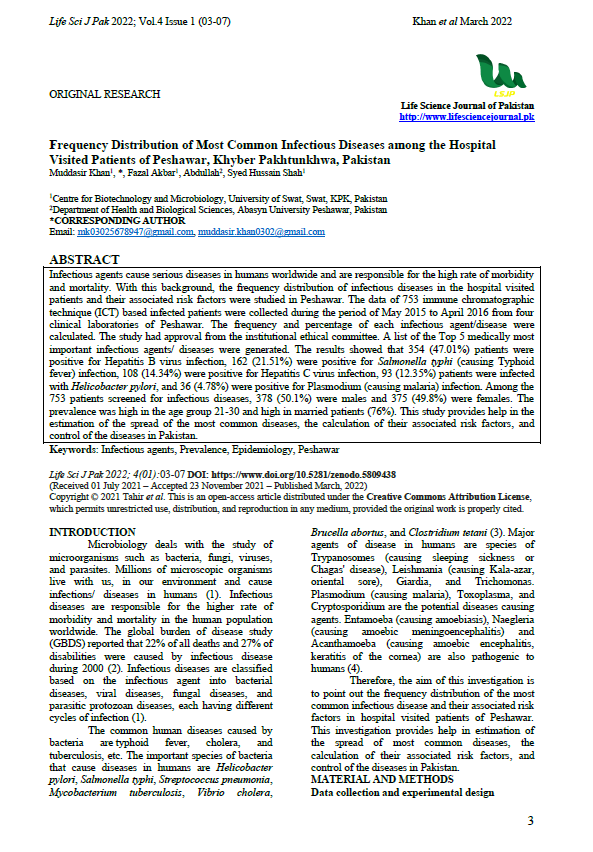Frequency Distribution of Most Common Infectious Diseases among the Hospital Visited Patients of Peshawar, Khyber Pakhtunkhwa, Pakistan
Main Article Content
Abstract
Infectious agents cause serious diseases in humans worldwide and are responsible for the high rate of morbidity and mortality. With this background, the frequency distribution of infectious diseases in the hospital visited patients and their associated risk factors were studied in Peshawar. The data of 753 immune chromatographic technique (ICT) based infected patients were collected during the period of May 2015 to April 2016 from four clinical laboratories of Peshawar. The frequency and percentage of each infectious agent/ diseases were calculated. The study had approval from institutional ethical committee. A list of the Top 5 medically most important infectious agents/ diseases was generated. The results showed that 354 (47.01%) patients were positive for Hepatitis B virus infection, 162 (21.51%) were positive for Salmonella typhi (causing Typhoid fever) infection, 108 (14.34%) were positive for Hepatitis C virus infection, 93 (12.35%) patients were infected with Helicobacter pylori, and 36 (4.78%) were positive for Plasmodium (causing malaria) infection. Among the 753 patients screened for infectious diseases, 378 (50.1%) were males and 375 (49.8%) were females. The prevalence was high in the age group 21-30 and high in married patients (76%). This study provides help in the estimation of the spread of the most common diseases, the calculation of their associated risk factors and control of the diseases in Pakistan.
Article Details

This work is licensed under a Creative Commons Attribution 4.0 International License.
 Life Science Journal of Pakistan
Life Science Journal of Pakistan
